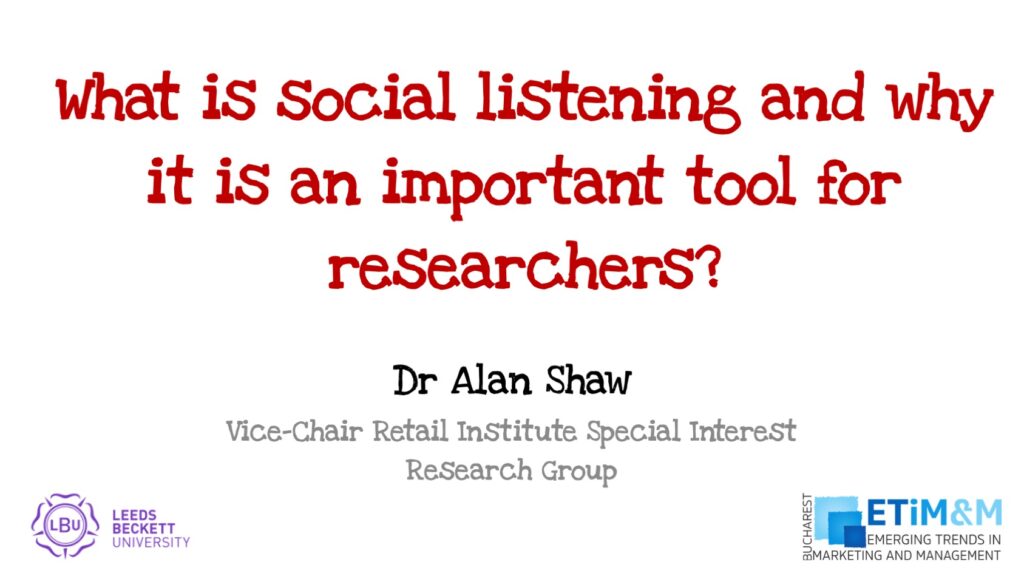I recently attended an event where the organisers encouraged individuals to use Twitter to interact with themselves and their presenters. Unfortunately these organisers did not understand how they could maximise the potential of this opportunity. I would now like to share with you some of my thoughts on what you must consider when preparing for such an endeavour and how using Twitter at events can be very benificial.
The use of social media to support your brand should never be an after thought. You must have a clear objective for its use and a way to measure its success. Remember, social media will consume valuable resources; you may also find that a capital outlay will be required. If this is the case, then a way to review the return on investment (ROI) will become vital.
Let’s put the ROI measurement on hold for a moment and consider the objectives. In most cases they are likely to be made up of the following (if you have any others then please highlight them in the comments section below):
- To grow your followers (i.e. to build your customer database).
- To increase brand exposure.
- To use it as an efficient means of communication.
- To generate new business.
Once you have confirmed your objectives, there will be a number of procedural factors to consider:
#Tags.
Think of a #tag term that can be linked to the event or brand. It should be unique so that you can distinguish it from the general noise that is taking place in “Twitterland”. The easiest way to do this is to end the term with the year. This will make it easier for you and your participants to identify who is saying what in relation to the event. This will be an important factor if your objective is to increase brand exposure: the #tag should also have the brand name within it. If the conference is large and enough people participate, you could find it trending for a period of time.
Promotion.
Promote the fact that you will be using Twitter during the event: use traditional and digital means. This factor will be important if you are looking to grow your Twitter followers. If you have not already done so, you need to develop a set of protocols for your social media platforms. Within it there should be a statement saying how you would manage new followers: will follow back all new followers or if it will limit new links to a specific type of individual, organisation or brand. If you are a big brand who already has many followers then you may not need to follow those who follow you. If you are a small brand looking to grow your Twitter profile you should seriously consider following those who follow you. If your protocol’s states that you will not adopt a re-follow process, then you may find your Twitter growth profile to be slow. What ever your decision, I do recommend that you have some form of filter system in place to ensure that you are not associated with any accounts that could damage your reputation.
Twitter Event Day Procedure.
Develop a “Twitter event day” procedure. This should include informing your presenters of the plan to use Twitter. If you need them to participate in the process you should also think about promoting them too: it is best practice to get their permission first. You should explain to these presenters that you will be using Twitter throughout the day and encourage them to take questions from Twitter or comment on posts that have been made. This becomes even more relevant if your event is webinar: most webinar platforms will have their own chat facilities, but by using Twitter for questions you will increase the exposure of the brand and/or event.
Start off as you mean to go on: the person introducing the event must highlight the fact that Twitter is being used. That person should outline how individuals can participate. There should be screens in the assembly / registration / refreshment areas, streaming the tweets. This will encourage those not involved to participate or at least provide visibility of the conversation (threads) that have taken place.
You may want to consider running a competition for the delegates: something simple like, “the best quote of the day will be selected by a panel” or even all Twitter participants will be placed in a hat and the winner drawn at random. The best way to do this is to copy the list onto a spread sheet which can then be numbered. You then draw the winning number(s) at the then end of the conference and present the prize.
Follow Up.
At the end of the event you should send out a message to all participants who engaged with the event on Twitter and thank them for their contribution. There should also be a subtle message on how they can remain engaged with your brand. This will help grow your business opportunities.
Measuring Success.
Your success criteria can be as simple as how many new followers you have gained. Alternatively you could consider:
- New business generated from the Twitter followers.
- Number of new contacts gained in relation to the cost of procuring a database.
- Brand reach and exposure in relation to traditional means.
You would use the same measurements to calculate the ROI.
Conclusion.
Using Twitter should be part of a bigger plan. This tool can help maximise customer interaction. Like all social media platforms it should never be an after thought: care, consideration and planning must take place if you are serious about using it.
Other articles you might find interesting:
- Visually Optimise Your Websites and Adverts
- The Changing Digital Landscape
- Cookie Regulations For Bloggers
- Understanding E-Mail Marketing
- Map Your Twitter Followers
Alan Shaw
Latest posts by Alan Shaw (see all)
- What is social listening and why it is an important tool for researchers? - July 31, 2021
- COVID-19 and Remote Learning: Experiences of parents supporting children with SEND during the pandemic. - June 30, 2021
- Using Netnography To Evaluate The Launch And Collapse Of The European Super League - April 21, 2021
- Developing Semi-Structured Interview Questions: An Inductive Approach. - April 9, 2020
- Developing Semi-Structured Interview Questions: A Deductive Approach - April 9, 2020















